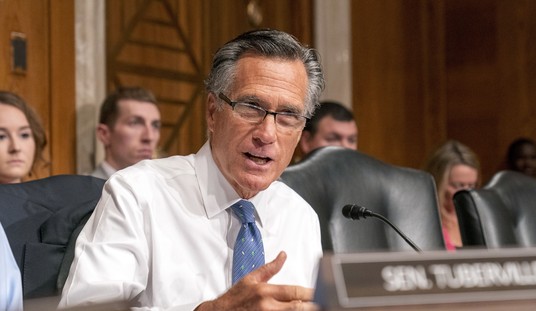At the start of this year, very few mainstream investment banks could see gold above $1200 this year. Most predicted a decline below $1,000. So much for their credibility, but these trend-following big banks are now falling all over themselves predicting higher prices for gold.
Credit Suisse analyst Michael Slifirski sees $1,500 coming fairly soon. “We forecast the gold price to increase through 2016 and believe the $1,500 per ounce mark could be tested by late 2016 or early 2017 as the macro implications of the Brexit vote are clarified, and the November U.S. election weighs on sentiment.” Specifically, Slifirski sees “gold increasing through 2016, averaging $1,475 in 4Q-16, $1,500 in 1Q-17 and an average $1,450 per ounce in 2017.”
Bank of America/Merrill Lynch (BoAML) called for gold to reach $1,500 and silver to “over-shoot” to $30. “We reinforce our bullish view particularly on gold and silver, which should continue to perform well given subdued global growth and risks that this will skew the public debate towards wealth generation/ distribution, populism and migration, with all the negative consequences this may have on effective economic policy-making.” The report also said that “the world has been walking from crisis to crisis and we see risks that this may not change.”
Recommended
Australian analyst Barry Dawes of Paradigm Securities says that the economic situation in Asia is more problematic than Brexit or other events in Europe. Asia could create a $200 to $500 rally for gold, he says. “You have to look at the long-term in gold and over the last few years, we’ve seen really strong demand out of Asia and that’s really sucked out the readily available gold out of the West…. I think we’re certainly going to see $1,400 quite soon and I think we’ll certainly see $1,500 by year end and maybe even that $1,900.” His predictions are based on 2016’s new realities of supply and demand: “If you look at jewelry demand plus central bank buying plus the ETFs, that’s bigger than mine supply and scrap supply so we’re running out of inventory.”
As a result of this bullish sentiment on Wall Street and worldwide, the SPDR Gold Trust (GLD) – the largest gold exchange-traded fund (ETF) – took in a net $12.2 billion in the first half of 2016, more than all U.S. stock ETFs combined. In June alone, GLD took in $3.3 billion new money.
Silver and Gold Reach Multi-Year Highs
Gold surpassed $1370 on Wednesday, July 6, before settling back to $1365 on Friday, July 8.Silver reached $20.50 before retreating to $20.30 on Friday. Both metals reached multi-year highs last week. The S&P 500 stock index breached its all-time high on Friday after a positive jobs report, which claimed 267,000 new jobs were created in June vs. a revised figure of only 11,000 new jobs in May. However, this report did not hurt gold since wage rate inflation was flat, rising just two cents per hour (0.1%) in June, signaling that the Fed will not raise interest rates later this month. So far in 2016, gold has performed 25% better than stocks and silver has risen over 40% higher than stocks.
Japan, China and India – Asia’s “Big Three” Gold Markets
Last week the Peoples Bank of China reported adding 15 metric tons of gold in June, bringing its official gold reserves to 1,823 metric tons. For years, China and India comprised 50% of global gold demand. Their demand is still high, but now we can add Japan to the list, making a “Big Three” of Asian demand. The main reason is negative interest rates in Japan. Japan’s rates turned negative last January. Since then, the Japanese have imposed negative rates on their longer-term bonds. Last week, the Japanese government offered 20-year bonds with negative interest rates.
The latest estimates from Fitch Ratings says that almost $12 trillion in global debt is now yielding less than zero. That’s a huge (12.5%) increase since just the end of May, mostly due to the Brexit vote in late June. Most of the world’s $12 trillion in negative interest-rate bearing bonds are now being issued by Japan, with most of the rest emanating from European nations. With rates turning negative on two continents – and likely to remain low or negative for many years – the perceived risk (the “opportunity risk”) of owning gold for one’s long-term savings is rapidly disappearing.
To take advantage of negative rates in Japan, investors in Japan have been buying gold, which they often store in Switzerland. The number of Japanese gold buyers shot up 62% in the first six months of this year. Many Japanese investors choose to store their gold in Switzerland because they perceive that holding gold bars at home is riskier than keeping gold in a safe overseas haven.
Speaking of Switzerland, last week the Swiss government floated negative interest rates on their 50-year bonds. With this move, the Swiss government is asking investors to believe that there will be no whiff of inflation in Switzerland over the next 50 years – an outrageous assumption.
This global trend toward negative interest rates will continue to fuel the gold bull market for a long time. Once nations find that they can charge people to borrow money, they won’t go back to paying people high interest rates on their bonds. Negative rates are a gold mine for governments.
























Join the conversation as a VIP Member